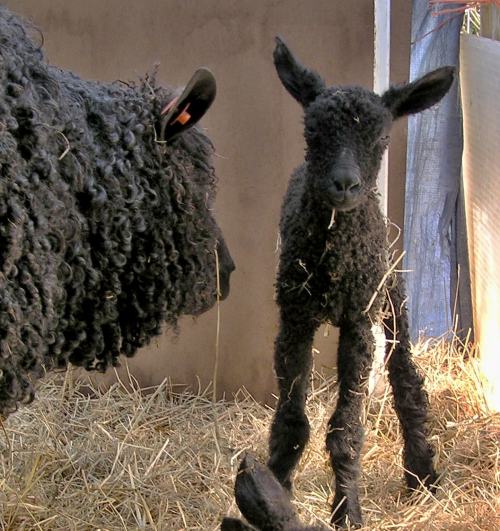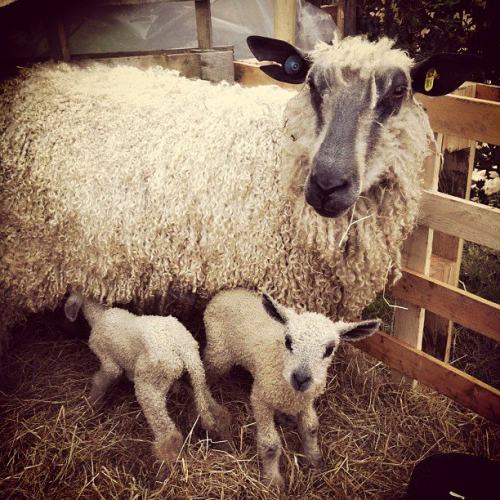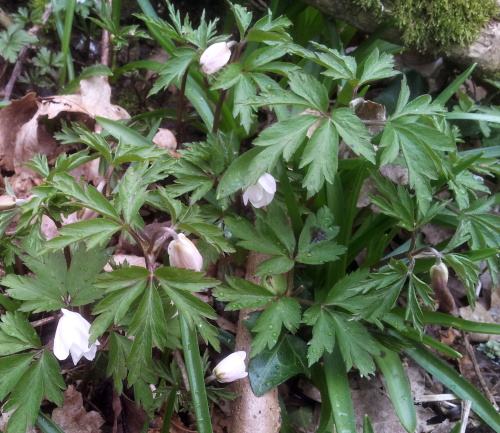In this unseasonably cold weather the trees and bushes on the Downs seem to be “oozing” rather than bursting into life! There are changes every day and there is a gorsebush bravely blooming halfway up to the top. Mind you, the old saying that when the gorse is out of bloom then kissing is out of fashion suggests that it’s generally blooming somewhere!!
Our garden aconites have come and gone and the primroses rehomed from my mother’s Kentish garden are brightening up the bank, mirroring those further up the bridlepath opposite “Downside”.
Wood anemones are flowering and wild garlic leaves are coming up…the latter delicious made into a pesto with walnuts (try kent cobnut oil or walnut oil) or used to wrap butter around a chicken breast: Yum!!
We have lambs at last! Two sets of twins, little black rams to Molly and a white girl and boy to Darcy with three more ewes to lamb, although two of those are not looking very pregnant!

Molly with James,her first born!
We are keeping the flock up by the house in this cold weather but they will be back to the Shepherd and Dog once they can cope without a shelter, and are big enough to escape the fox.

Darcy with twins Margot and Rudie
Schmallenberg
The threat of Schmallenberg virus is sadly still very much hanging over UK farmers this Spring, to compound the trials of those who are also losing lambs to the snowy weather. A report on the radio this morning asked us all to support them by buying English lamb as often as possible and I’m sure we don’t need too much encouragement.
A little background to this new disease .. It is named after the town in Germany where it was first identified (coincidentally twinned with Burgess Hill!) and is an “orthobunyavirus”, spread by midges similar to the Akabane virus found in the hotter parts of the world. Its epidemiology can therefore be cautiously predicted using that virus as a model, and it does seem that affected animals, primarily sheep and cattle, become immune in subsequent years and will give birth to normal offspring the following season. Sadly the lambs and calves born to vulnerable (i.e. non-immune) adults infected at the crucial stage of pregnancy (25-50 days for sheep, 70-120 days for cows) are born with abnormalities such as fixed and inflexible joints, a twisted neck or spine, domed skull or a short jaw, deformities usually incompatible with life, and very often needing a caesarean to deliver them. As you can imagine this plays havoc with the farmers profit margin.
We are keeping our fingers crossed that our little flock of Wensleydales will not be affected. It is hard to assess the local risk as a proportion of lambs are always still born for various reasons, and local farmers have only just started lambing. Let’s hope this freezing weather will have at least seen off the affected midge population – every cloud…..!
Pippins


